
   
     Mull's Birds:
Mull's Birds: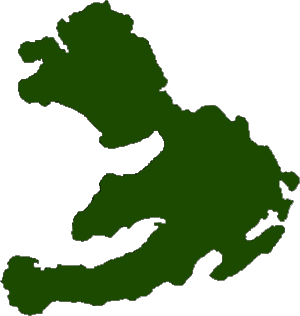
To see a Golden
Eagle in flight or just sitting
on a hill is awesome
The shear size
and bulk of the White-Tailed
Eagle is phenomenal
A Hen Harriers
hunting technique and grace is a
joy to behold.
Short Eared Owls
feather markings and flight are
magical to watch.
|
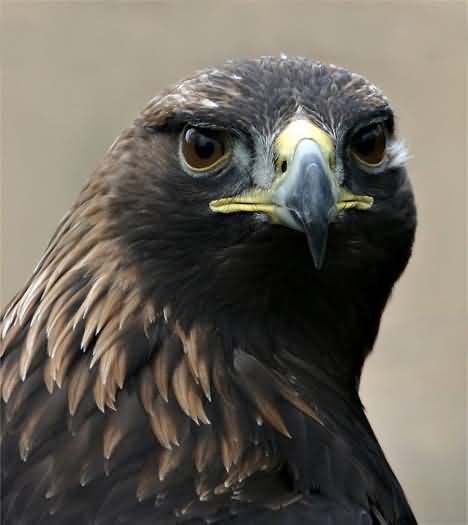
|
Golden
Eagle. Aquila
chrysaetos
Found on Mull all
year this iconic bird is now found
almost exclusively in Scotland in
the U.K. with only 1 bird in
England and a re-introduction
programme in Ireland. On Mull we
are lucky to have several pairs as
there is no persecution of birds
of prey on the Island. The golden
Eagle has a wingspan of 204 to 220
cms or 6ft 6ins to 7ft 6 ins with
a body length of 75 to 88 cms or 2
ft 6 ins to 3 ft and weighs 4 to 6
kgs or 9 to 13 lbs. Their diet
consists of small birds to large
mammals, mainly hares and rabbits
although on the west coast they
eat more carrion such as deer and
sheep as prey density is much
lower. Golden Eagles have been
around since the last Ice Age
about 12,000 years but never in
great numbers due to large
territory demands. Nest building
takes place in January and
February and sitting taking place
in March or April with an egg
incubation time of around 6 weeks.
Two chicks are often hatched but
more often than not only one
survives. The young fledge at
about 11 weeks of age but this can
vary and they stay within their
parents’ territory for anytime
between a month to 5 months
depending on the size and
independence of the youngster. |
White-tailed
Eagle.
Haliaeetus albicilla
Found on Mull all
year this awesome bird, the 4th
largest Eagle in the world was
successfully re-introduced to the
west coast of Scotland in 1975 and
now we have approximately 40
breeding pairs on or around the
west coast. Formally know as the
Ern the earliest records in
Britain date from approximately
125,000 years ago. White- tailed
Eagles can live for around 30
years and have an amazing wingspan
of 2 to 2.5 metres (6 to 8 feet)
with females being bigger than
males. This large Eagle has a body
length of 68 to 90 cms (27 to 36
inches) and weighs 3.1 to 6.9 kgs
(7 to 15 lbs). The nest is very
large 1.5 metres (4.8 feet) in
diameter, usually in a tree and by
the coast; 1t starts off shallow
but gets deeper over time. It
consists of Twigs, Heather,
Seaweed and Driftwood and lined
with grass. Incubation takes about
38 to 40 days and 1 to 3 eggs are
laid, both birds take turns
nestling the eggs with changeovers
about every 4 hours. When the
young have hatched they are looked
after by both parents for 2 to 3
weeks with one or two hatchlings
being the norm. Both parents bring
in food but the female mainly
responsible for feeding the very
young chicks. The diet is very
varied can include snakes, frogs,
hares, rabbits, small lambs and
goats as well as the usual sea
birds and fish. Fledging takes
place between 70 to 80 days after
hatching and they can stay in and
around the nest site for some
time. The young begin dispersing
in the autumn giving their parents
a brief respite before the process
starts all over again as most
Eagles are monogamous. |
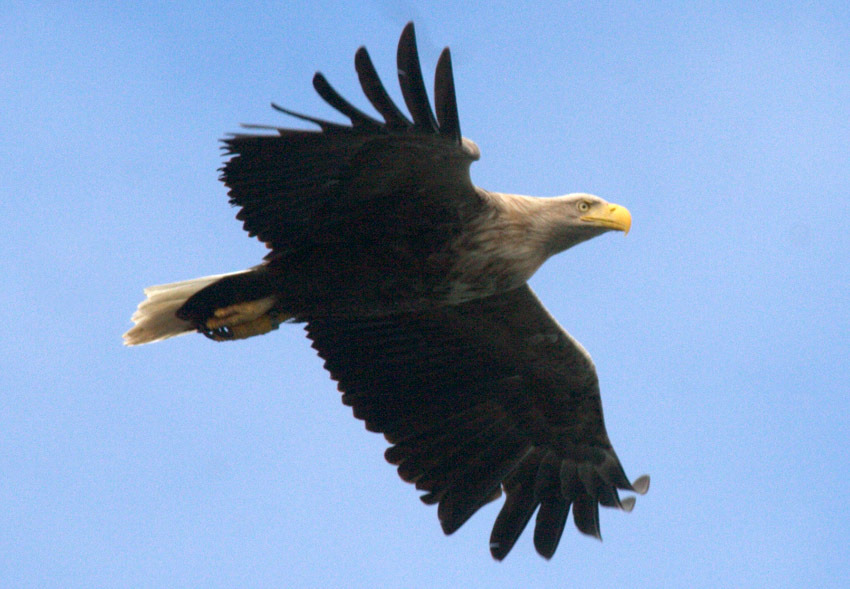
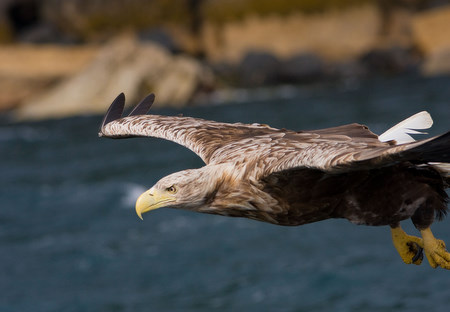
|
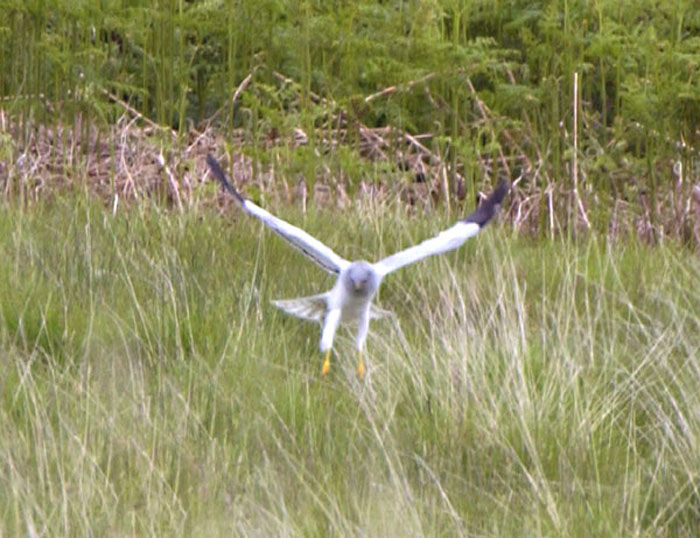
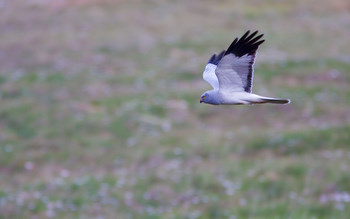
|
Hen
Harrier.Circus
Cyaneus
The most
persecuted bird in Britain as they
are moorland birds that take young
grouse chicks, found all year on
Mull and in good numbers in good
vole years. The males, much
smaller than females are
prominently grey in colour with a
white rump and black wing tips.
The females and juveniles are
brown with the distinctive white
rump showing well and giving the
females the name ringtail,
juveniles have a more Rufus
underbelly. The two sexes were
once thought to be separate
species because of their colour
difference and they got there name
from their habit of eating
domestic fowl. There are about 400
breeding females in Britain most
of them in Scotland, their
preferred habitat being young
woodland, heathland and moorland.
Hen Harriers are ground nesting
birds laying 4 to 6 eggs at 2 to 3
day intervals with incubation
lasting between 29 and 39 days
resulting in different chick
sizes. The female incubates the
eggs and is fed by the male ‘prey
passing’ and the young leave the
nest at 2 weeks old and fledge at
6 weeks remaining dependant on
their mother for a further4 weeks.
Their diet consists of small birds
and mammals mainly voles although
they can take small Hares and
Rabbits in some areas. When
hunting rodents their flight is
very slow with few wing beats,
hunting birds the flight is much
faster but on the whole when
hunting they prefer the element of
surprise. |
Short-eared
Owl.
Asio Flammeus
This beautiful day
flying owl is a joy to see, both
sexes are similar, but the male is
paler and less heavily marked.
Their wingbeats are slow and steep
making their flight more like a
butterfly or moth. The Short-eared
Owl has a long wing span compared
to body length, the length being
37 to 39 cms (14 to 16 inches)
whilst they have a wing span of 95
to 100 cms (37 to 39 inches) with
females approximately 15% heavier
than males. Like the Hen Harriers
they nest on the ground in similar
habitats and share the same type
of prey although Short eared Owls
have distinct preference to Field
Voles and other rodents. They lay
between 4 to 8 eggs dependent on
vole population with incubation
taking between 24 to 28 days. The
young leave the nest at about 2
weeks old with young dispersing in
July, in exceptional vole years
some birds will have a second
brood.

|
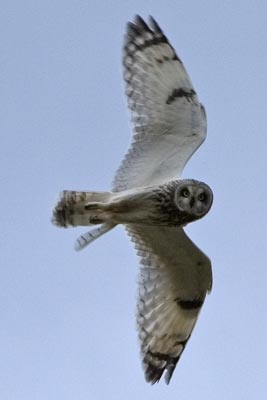

|
Pam & Arthur Brown
Ardrioch Farm
Dervaig, Isle of Mull.
Argyll. PA75 6QR |
[email protected]

|

01688
400415
Mobile 07780
600367
|
 
|
This is the web
site of Pam & Arthur Brown,
Ardrioch Farm, Dervaig, Isle of
Mull. PA75 6QR
|
|
|

